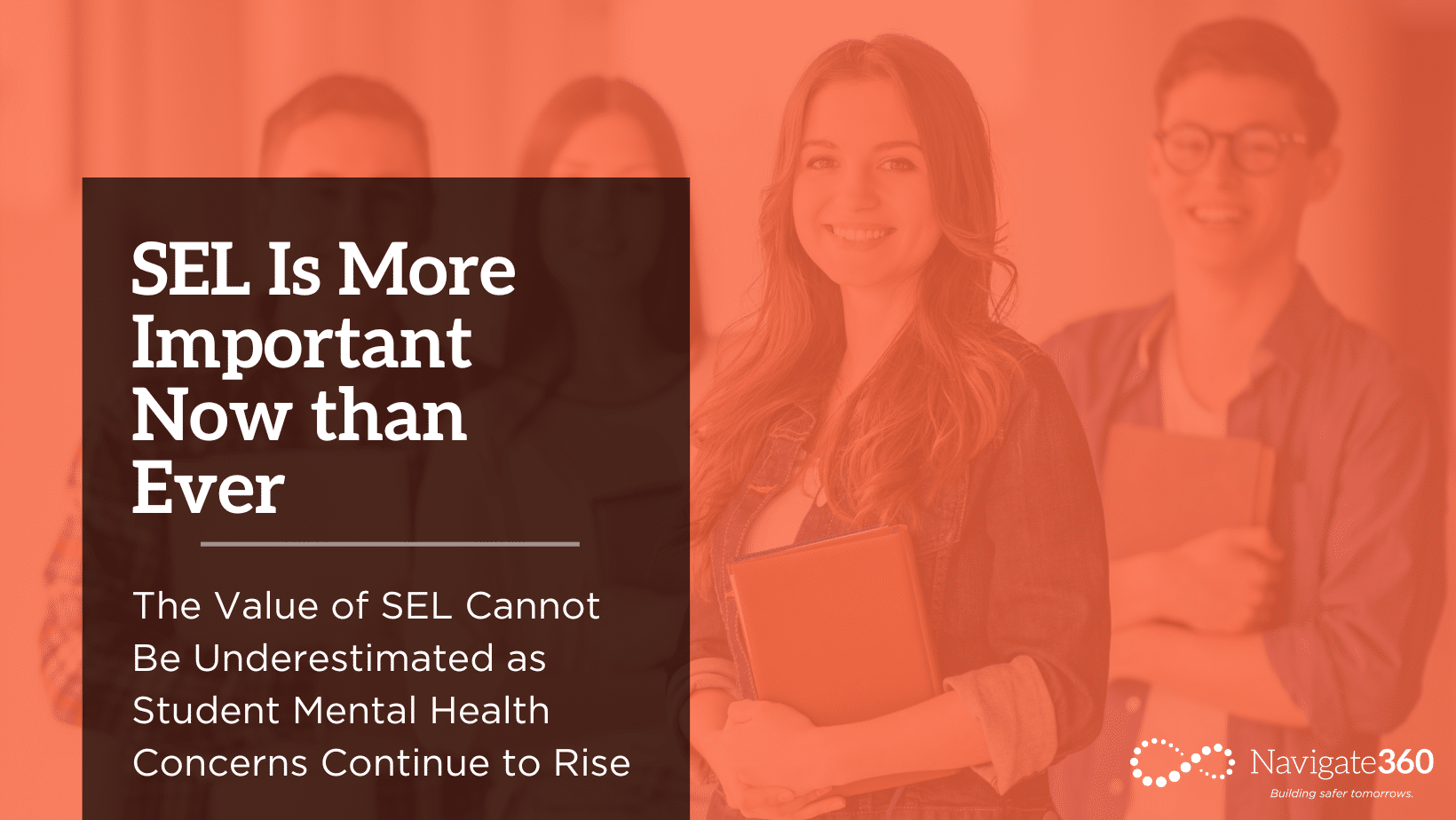The Value of SEL Cannot Be Underestimated as Student Mental Health Concerns Continue to Rise
Social-emotional learning (SEL) isn’t new – it’s been an essential foundation of student learning since the 1970s under a variety of names, including emotional intelligence, social skills and life skills. The term SEL entered mainstream education in the mid-1990s, when Daniel Goleman’s book Emotional Intelligence argued that social success is more important than IQ in determining an individual’s success in life.
The goal of SEL instruction is to equip students with skills needed to make positive choices related to one’s own actions and behaviors. When it comes to SEL-related life skills, research shows that helping students build social and emotional skills can improve their academic achievement and classroom behavior, while reducing stress and depression. Data also shows long-term benefits. SEL is an essential skill for healthy child development and can help young people manage stress, practice responsible decision-making and improve relationship skills.
Students Need Social-Emotional Support
The social and emotional competencies taught in SEL are a crucial tool for caring for student mental health, and recent data shows that students need such support now more than ever. According to the CDC:
- 2.5 million youth in the US were diagnosed with severe major depression in 2022.
- 44% of students report feeling persistently sad or hopeless.
- 60% of youth with major depression do not receive any mental health treatment.
These statistics make it clear that students need tools and support to navigate mental health crises. By prioritizing SEL, we take an important step forward in addressing mental health issues and ensure that students have access to the tools they need to be successful in and out of the classroom.
What SEL Is and Isn’t
The challenges facing education today are unparalleled, and social-emotional learning is one of the evidence-based tools available to address these troubling trends. The issue is that the practices and goals of SEL are often misunderstood.
While you could make lists of what SEL is NOT, here are some examples of what SEL IS:
When preschoolers and kindergartners learn how to share.
Sharing is a “prosocial skill” that also includes behaviors such as caring for others, cooperating and helping. These essential skills are the foundations on which healthy child development occurs, and they lead to behaviors such as acting with ethics, showing integrity and demonstrating personal responsibility. Research shows that comprehensive SEL programs have been linked to developing positive prosocial behaviors in children.
Elementary school students developing conflict resolution and problem-solving strategies.
When students were taught explicit strategies to resolve conflicts and problem solve, their ability to solve problems increased and there was a decrease in the number of classroom disturbances. In one study, the number of classroom disturbances fell by half.
Middle school bullying prevention programs.
Not only does explicit SEL instruction lower the rate of bullying among general education students, studies show it also decreased the incidences of bullying that occurred to student with disabilities.
Programs that help ensure high school students graduate, avoid drugs & alcohol or reduce teen pregnancy.
One study looked at children who had SEL lessons in kindergarten and found that they had a lower likelihood of being involved in juvenile justice, living in poverty and abusing substances as long as 20 years after using the program.
How Do We Build Support for SEL Programs
Teachers and parents agree that children need to learn social and emotional competencies, and good teachers are already equipping students with lessons in social awareness, self-management, responsible decision making and relationship skills. The first step in moving from this shared understanding to enthusiastic support for SEL curriculum is understanding what SEL is and how to finetune its benefits to address the unique needs and cultures of each school and district.
Rather than parsing what is taught to find potentially offensive content, let’s focus on better understanding the social and emotional development needs of students. Let’s prioritize holistic safety and wellness solutions for schools, empower educators to continue to use proven techniques backed by decades of research and focus on reaffirming our shared values around what children need to become well-rounded adults.
Taking a Holistic Approach to Student Success
School safety & student wellness must become synonymous with academic success, because students can’t reach their full academic potential unless they feel safe and supported within their classroom. Now is the time to invest time and resources into this tool that could make a real difference in the lives of children.
To learn more about creating a pathway to wellness for your students with SEL, watch this on-demand webinar today.




